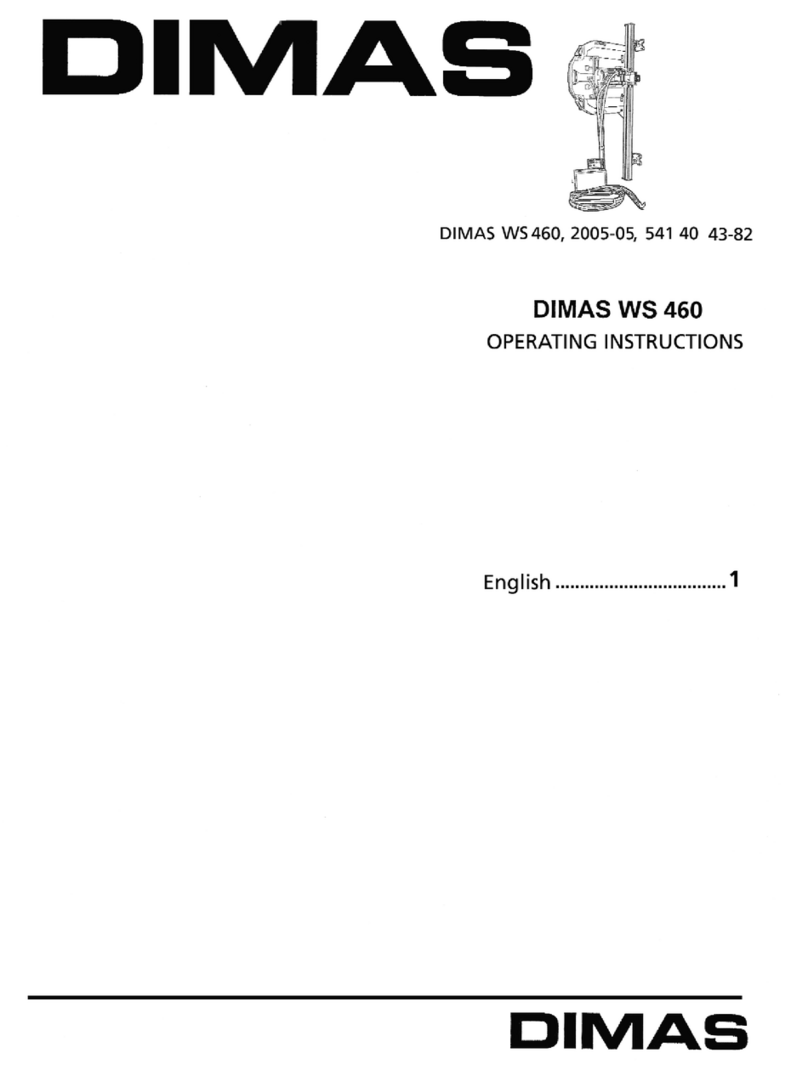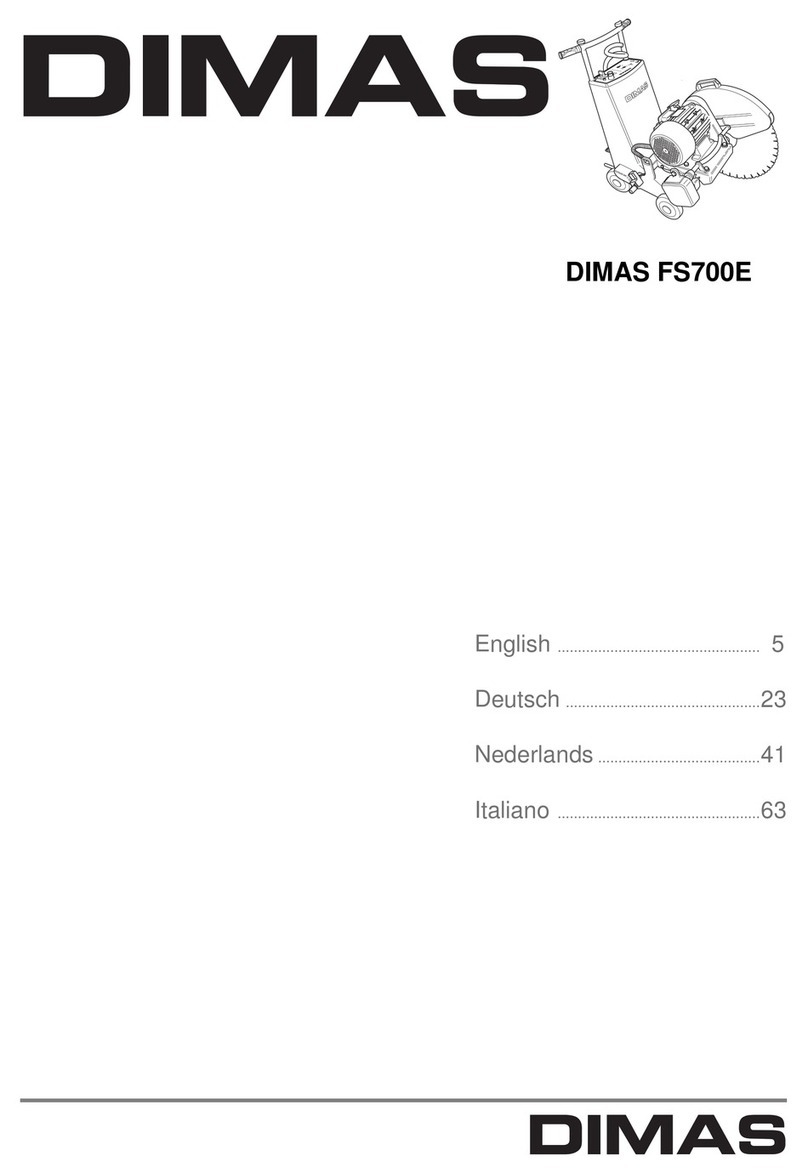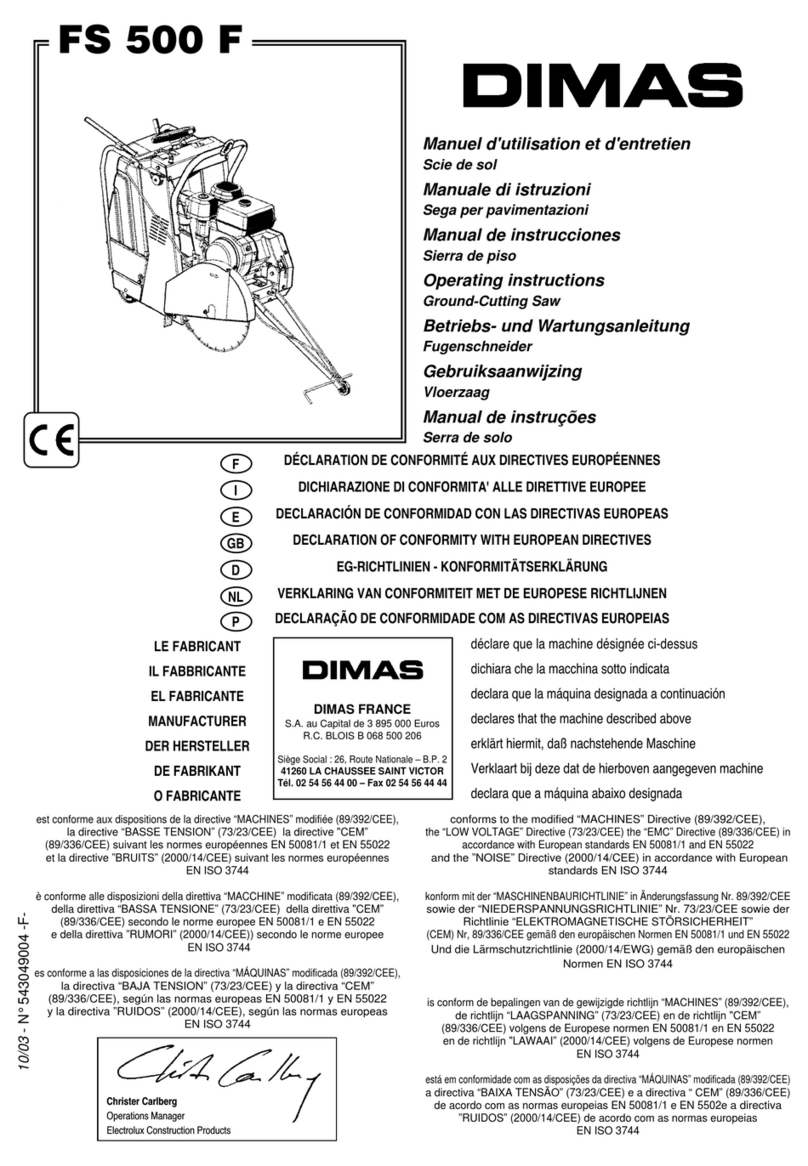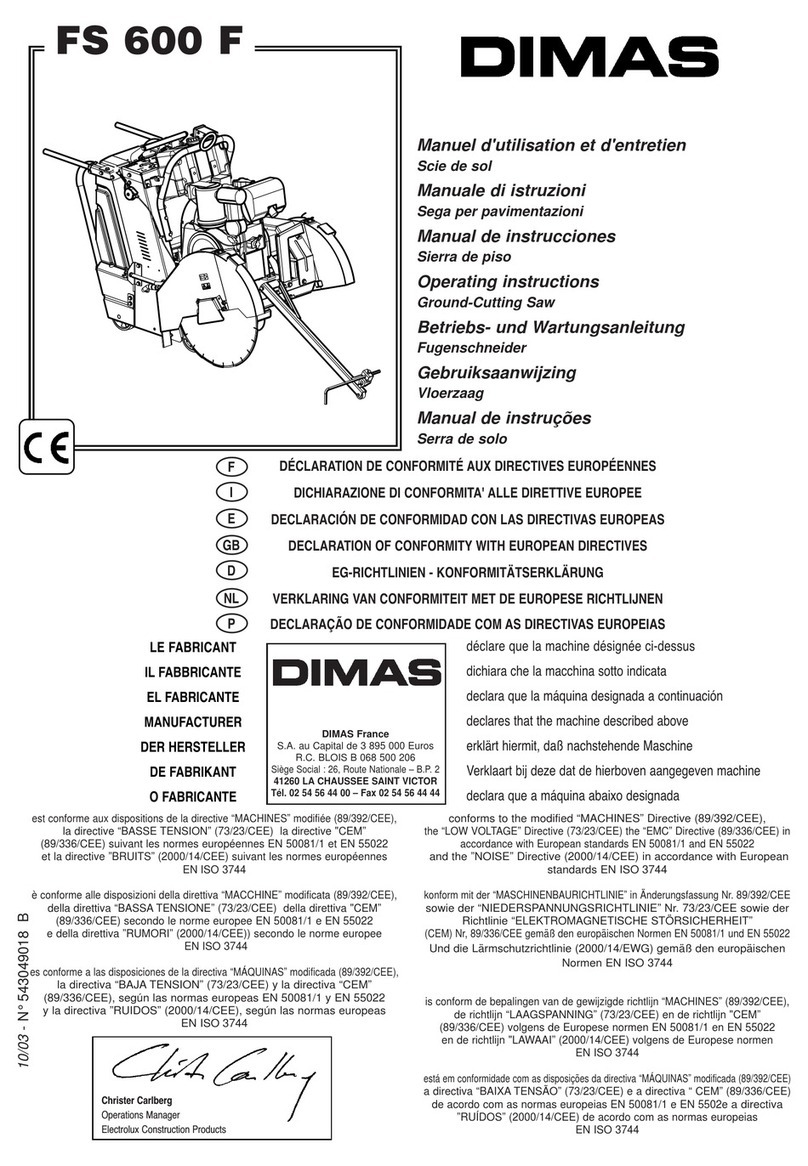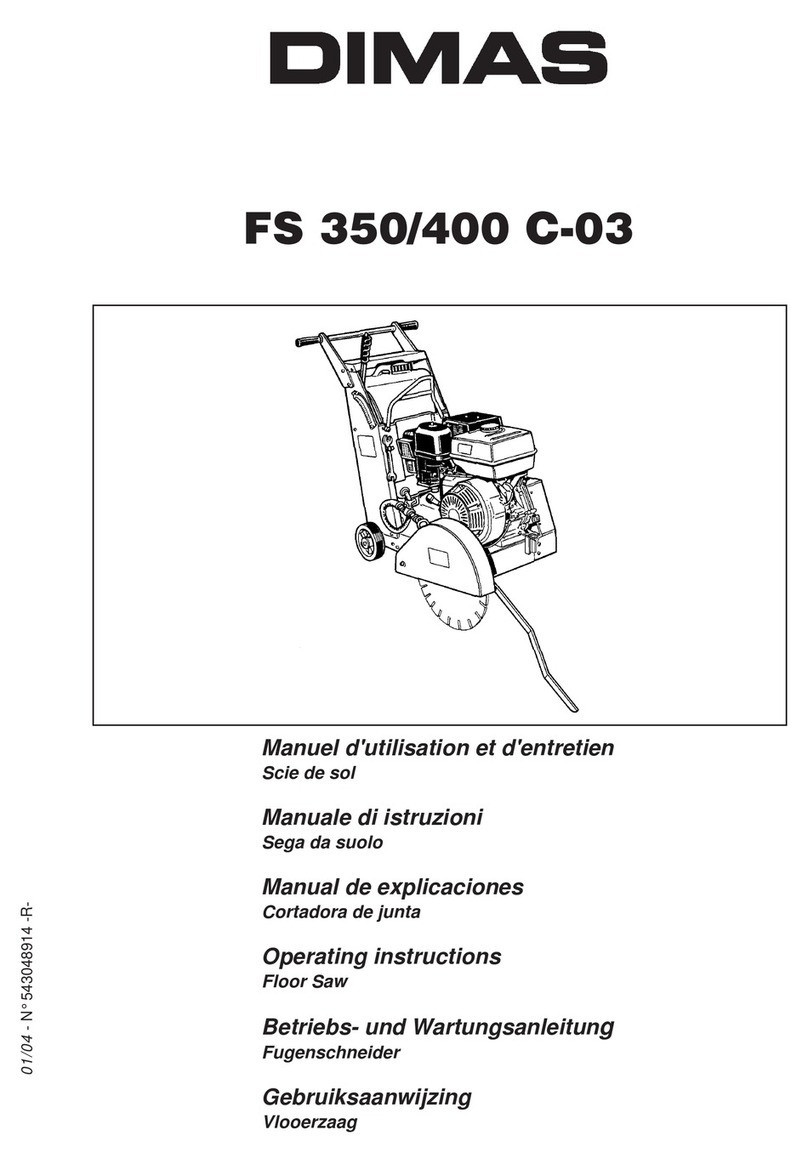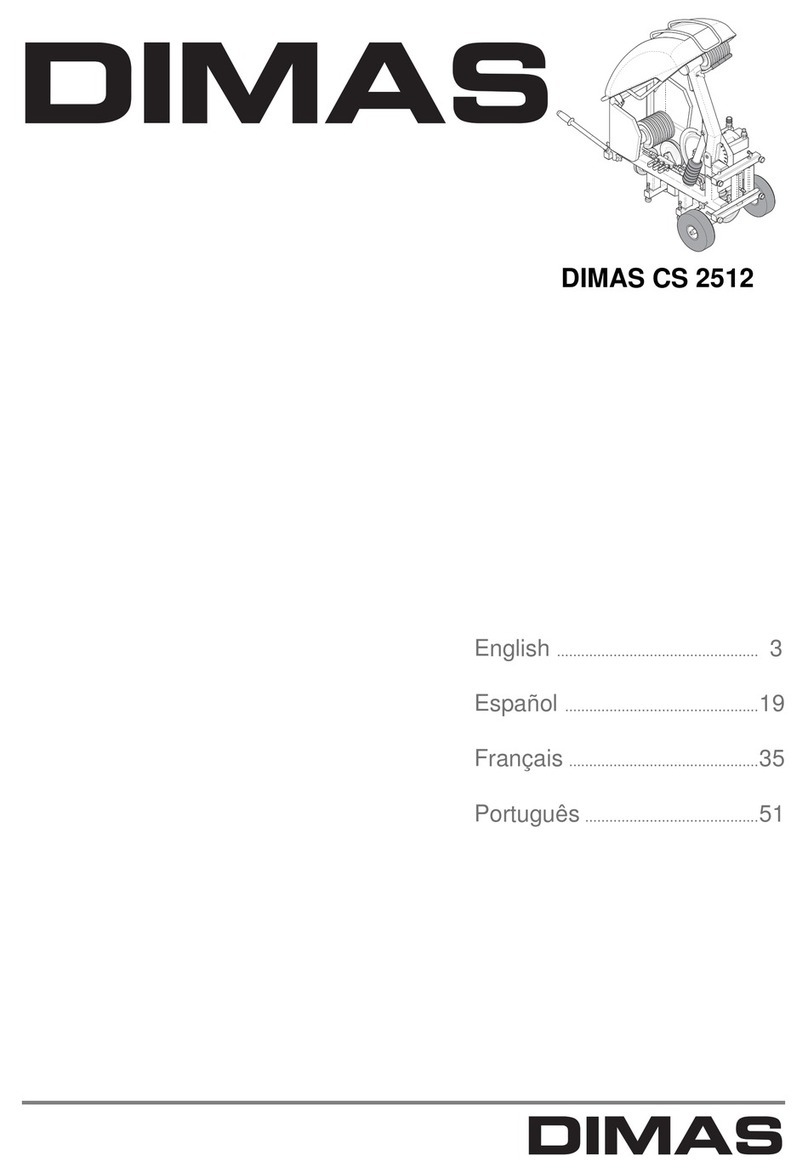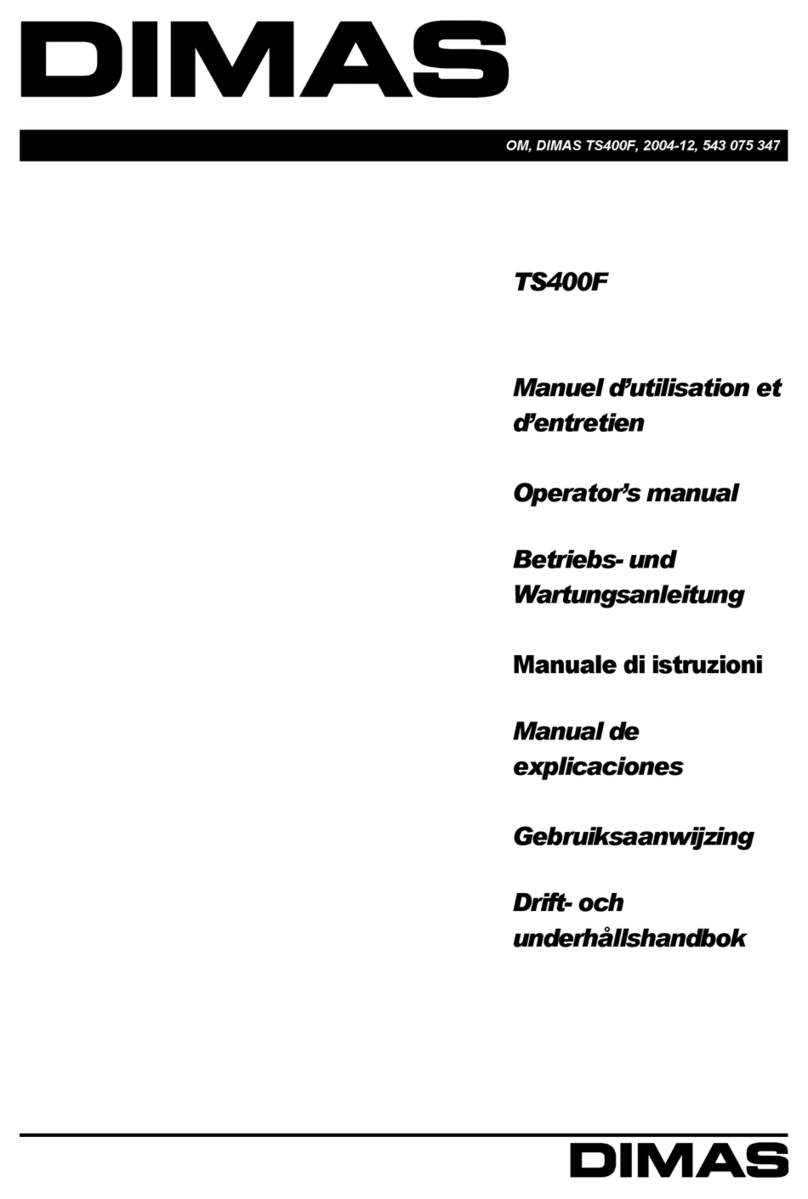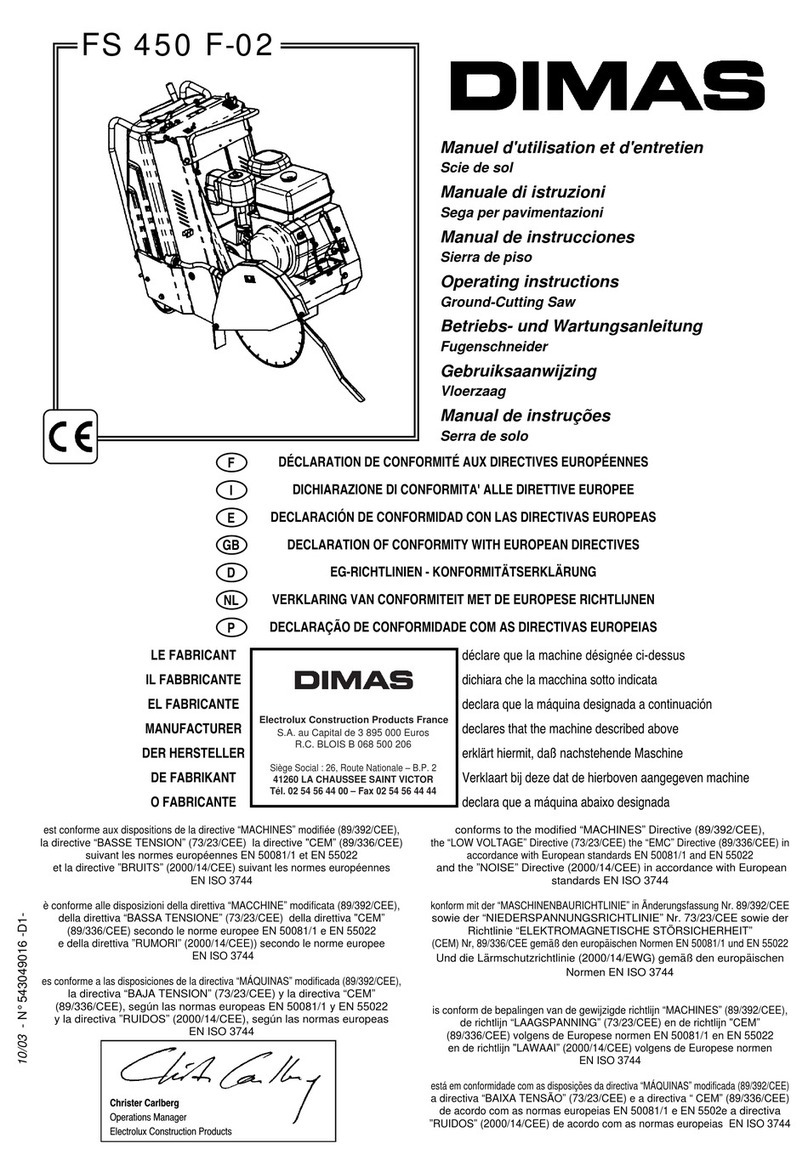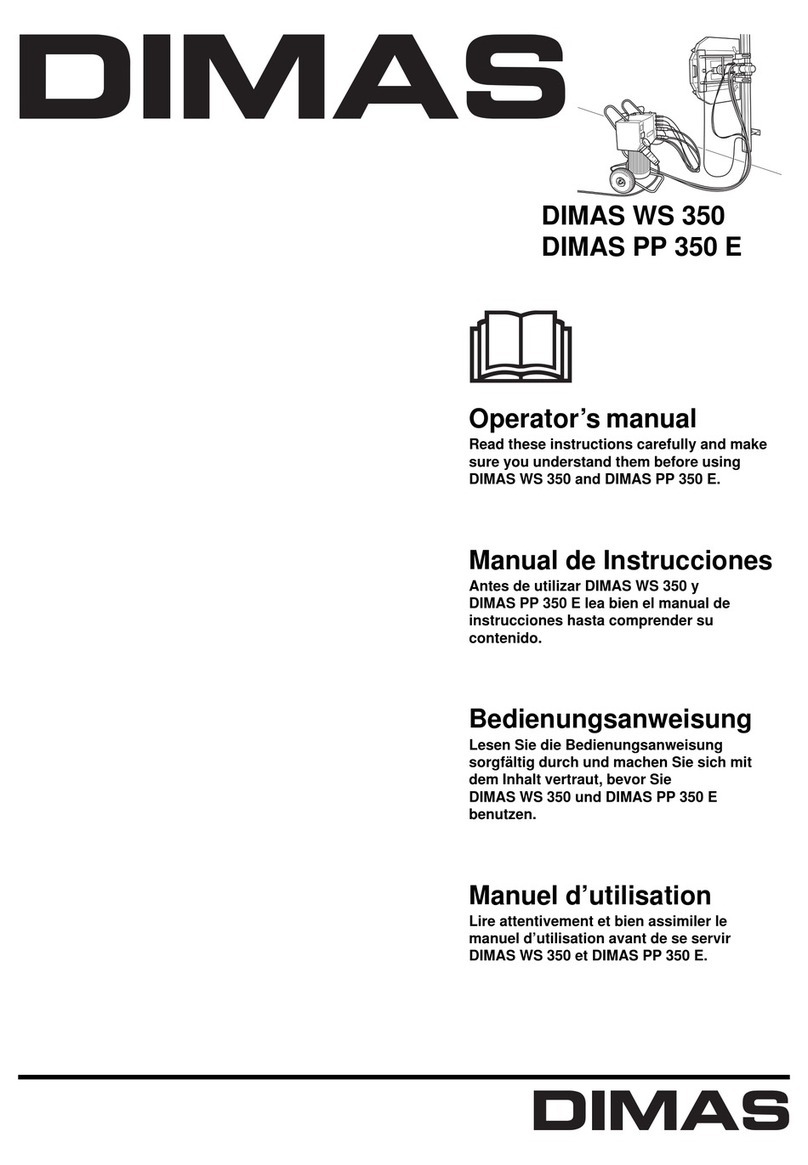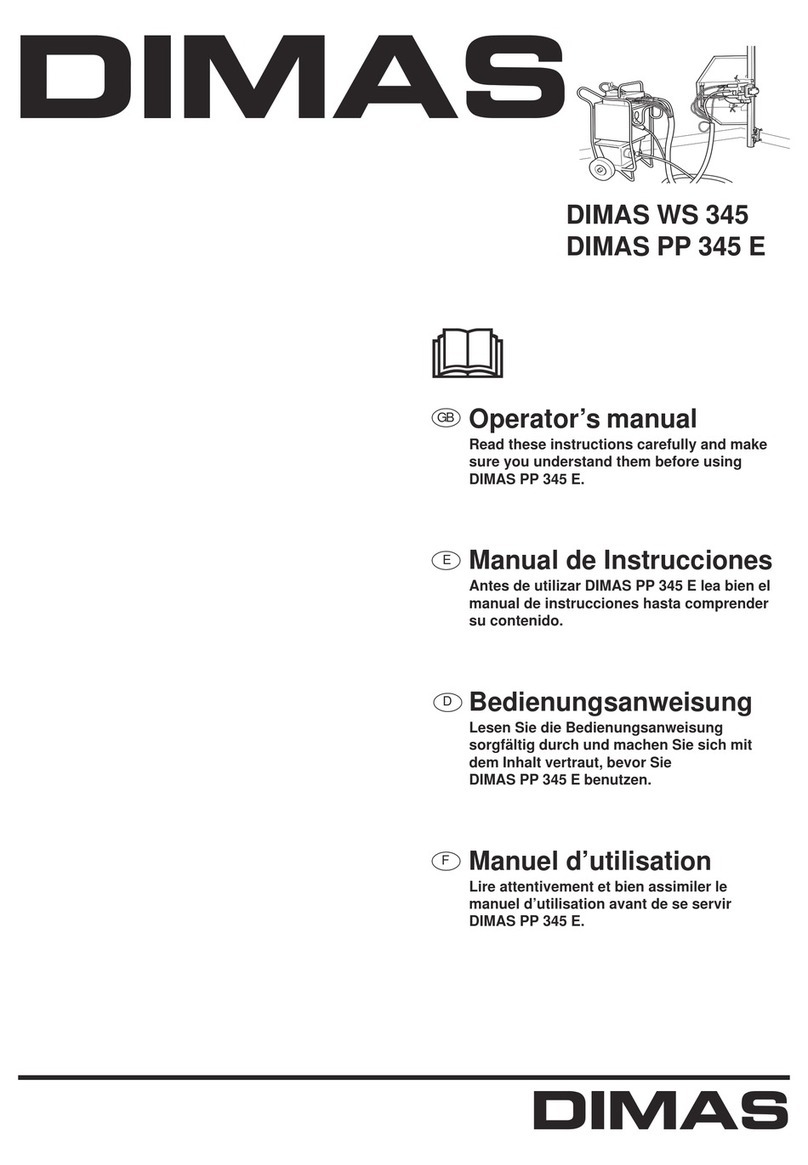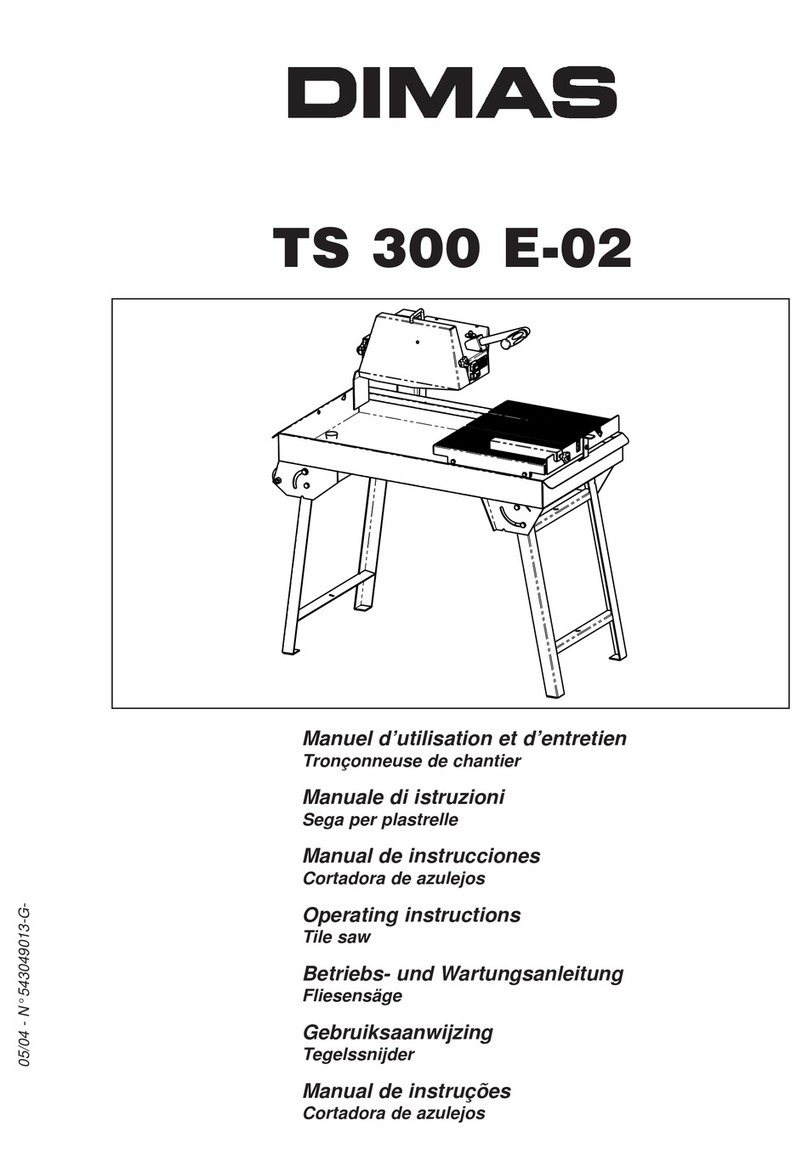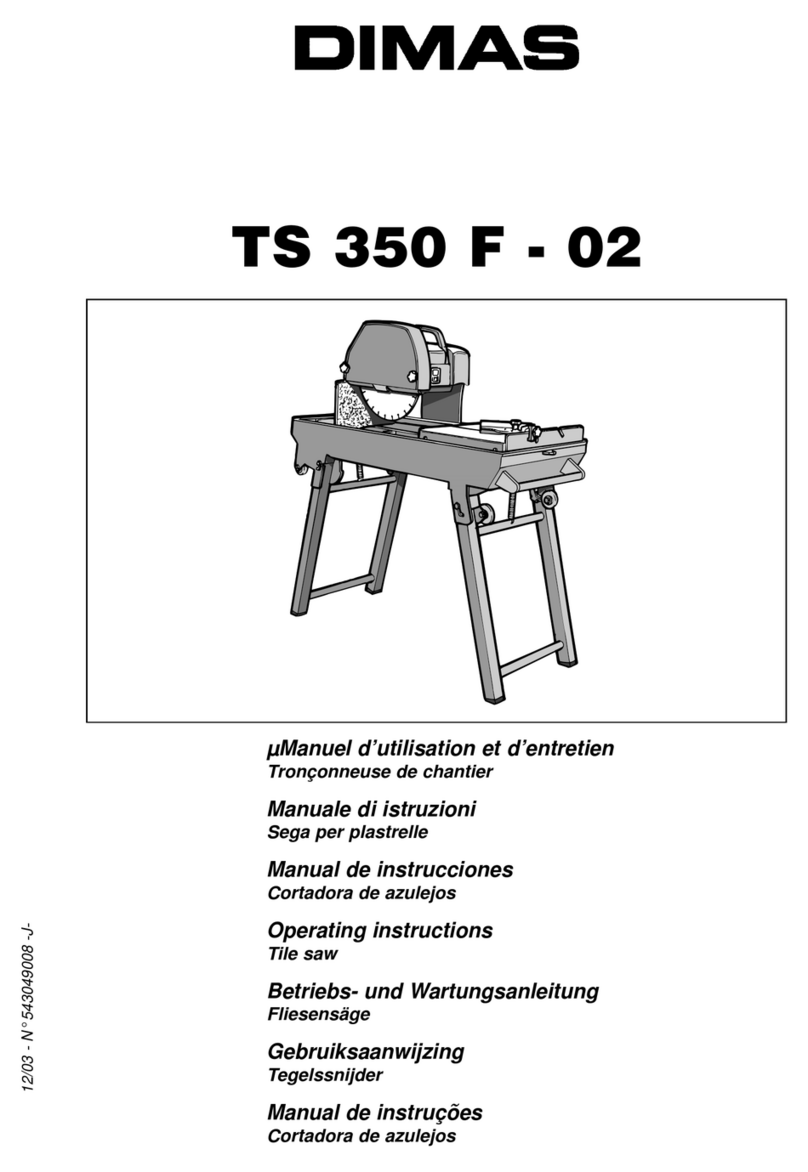
4 - English
Operator’s Manual WS 463
Safety Instructions
During the design and production of Dimas products,
great importance is placed on safety, as well as
effectiveness and ease of use. To ensure that the
machine remains safe you must pay attention to the
following points:
WARNING!
This machine is only intended for use
together with a DIMAS PP 355, DIMAS PP
455 and DIMAS RC 455. All other use is
forbidden.
CAUTION
Under no circumstances may the machine be
started without observing the safety
instructions. Should the user fail to comply
with these, Electrolux Construction Products
Sweden AB or its representatives are free
from all liability both directly and indirectly.
Read through these operating instructions and
make sure that you understand the contents
before starting to use the machine. Should
you, after reading these safety instructions,
still feel uncertain about the safety risks
involved you must not use the machine Please
contact your dealer for more information.
• Check that all couplings, connections and hydraulic
hoses are in full working order.
• Make sure that all hoses and electrical cables are
connected to themachine correctly before you start the
machine.
• The safety distance is 4 metres in front of and to the
side of the saw.
• Make sure that there are no persons or animals in the
working area.
• Check that the blade guard is not damaged and that it
has been fitted correctly.
• Never cut without using the blade guard. The
maximum size of saw blade when starting is 1000 mm.
As accessories there are also blade guards for 800,
1240, and 1600 mm blades.
Never remove the blade guard without first shutting off
the hydraulic unit and ensuring that the blade has
finished rotating completely.
• Never disconnect the hydraulic hoses without first
shutting off the hydraulic unit and ensuring the motors
have stopped completely.
• Check the machine, couplings and hydraulic hoses
daily for leakage. A rupture or leak can cause a
”hydraulic fluid injection” in the body or result in other
serious physical injury.
• Do not exceed the specified hydraulic fluid flow or
pressure for the tool being used. Too high pressure or
flow can resulting rupturing
• Never use the hydraulic hoses to lift the saw.
• Do not misuse hoses.
• Do not use hoses that are distorted, worn, or damaged.
• Check that the hoses are connected correctly to the
machine and that the hydraulic couplings lock as
intended before pressurising the hydraulic system. The
couplings are locked by turning the outer sleeve on the
female coupling so that the slot moves away from the
ball.
• Keep the hydraulic hoses and couplings free from dirt.
• Always switch off the power to the hydraulic unit before
moving the equipment.
• Always saw in a manner that permits easy access to
the emergency stop.
• Never leave the machine unsupervised with the engine
running.
• Clearly mark out all cuts to be made before you start
sawing, plan these so they can be carried out without
danger to persons or the machine.
• Check with the construction drawings whether there
are electrical cables, water mains, gas pipes or
drainage pipes within the working area.
• Always check and mark out where gas pipes are
routed. Cutting close to gas pipes always entails
danger. Make sure that sparks are not caused when
cutting in view of the risk of explosion. Remain
concentrated and focused on the task. Carelessness
can result in serious personal injury or death.
• Check that electrical cables within the working area are
not live.
• Hoses that are marked and approved as electrically
non conductive must be used when using hydraulic
tools on or in the vicinity of electrical cables. The use of
other types of hoses can result in serious physical
injury or even death.
• Observe care when lifting. You are handling heavy
parts, which implies the risk of pinch injuries or other
injuries.
